The German Shepherd Alaskan Malamute mix, also called the Alaskan Shepherd, is a sizable wolf-like dog that combines the intelligence and bravery of the German Shepherd with the power and commanding physique of the Malamute.
These dogs were born to draw attention to their appearance, but they also make dedicated and caring pets at home.
Alaskan Shepherds can be demanding dogs and are frequently headstrong and born with an independent spirit, so they might not be the best choice for an owner who leads a sedentary life.
However, they can make superb, tenacious working dogs and are sure to attract attention everywhere they go thanks to their menacing wolf features.
Fundamentally a sled dog, it possesses the stamina and strength that their ancestors required in order to lift and carry huge loads.
You shouldn’t allow the fact that this dog is “all business” to stop you from getting one, though. They are also very kind, family-oriented, devoted, and excellent watchdogs.
Continue reading this comprehensive breed guide to the German Shepherd Alaskan Malamute mix to learn more about this fascinating crossbreed.
Is The German Shepherd Alaskan Malamute Mix A Real Breed Of Dog?
This is probably the first question you are asking, particularly if you’ve never heard of this designer dog before. Well, it exists and it’s real!
The so-called Alaskan Shepherd was created by crossing an Alaskan Malamute with a GSD.
Breeders desired the best of the two robust, well-liked purebreds, which were bred to pull sleds and deliver goods.
The American Kennel Club (AKC) does not officially accept the German Shepherd Malamute crossbreed in its ranks, mainly because it isn’t a purebred dog.
The Alaskan Shepherd provides a perfect balance of companionship and protection that works well for families and single owners alike by fusing the greatest qualities of two different hard-working, well-behaved dogs.
If you choose to get one as a pet, be prepared to devote a lot of time to your connection because they require a lot of hands-on training while they are young.
Meet The Parents
And while though its precise history is impossible to confirm because it is not an AKC-recognized breed, learning about the history of its parent breeds can reveal a lot about this designer dog.
So let us cover the most important aspects of the German Shepherd and Alaskan Malamute breeds before we move on to talking about the Alaskan Shepherd in particular.
German Shepherd
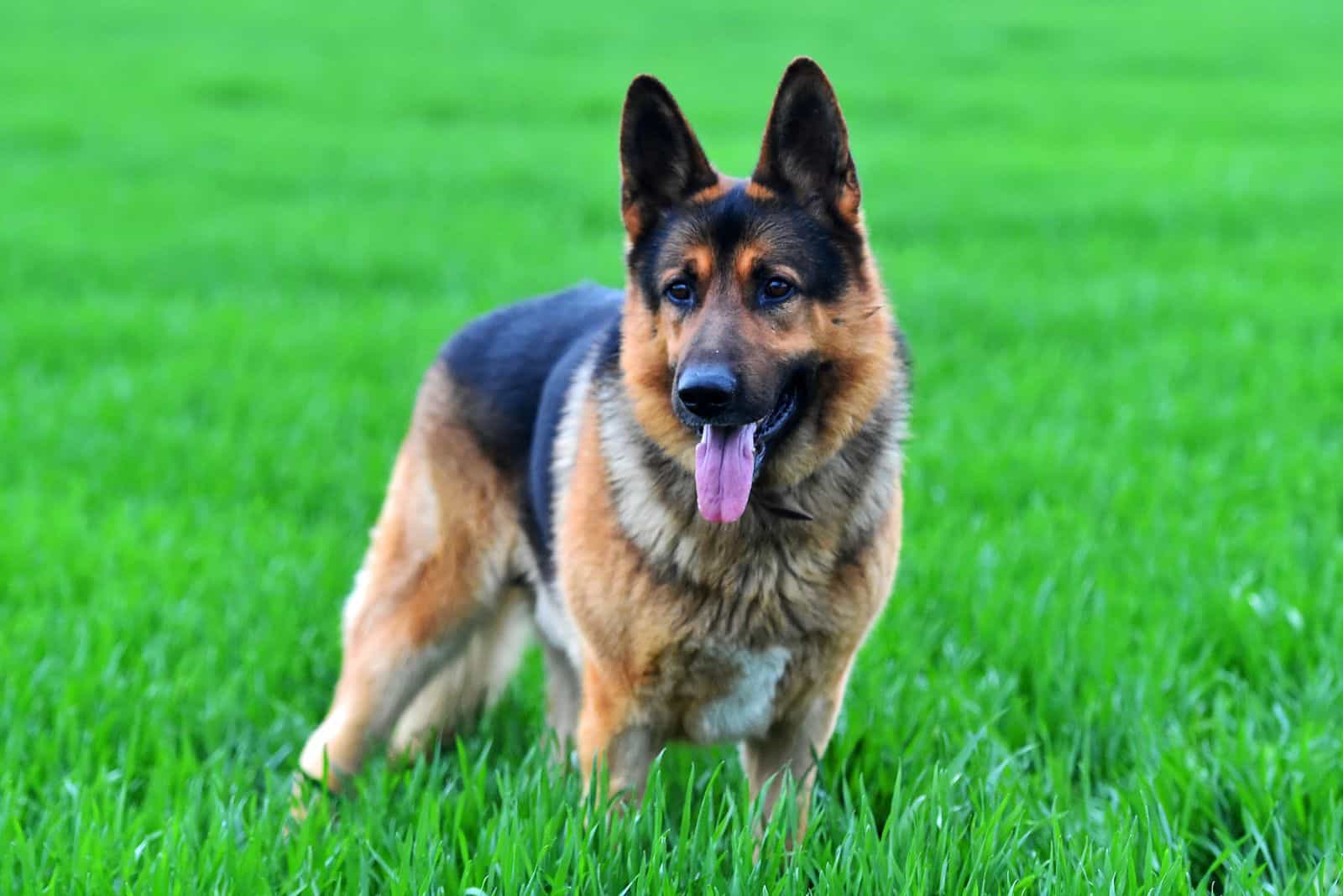
In the early 1800s, Max von Stephanitz developed the German Shepherd from European herding dogs to create one of the best working canines in the world.
He bred a dog that continues to serve as a tireless service or protection dog today with an emphasis on adaptability, work ethic, and intelligence.
It should be noted that the German Shepherd has essentially divided into two distinct lines — three if you include those that are just bred to make good companion animals.
There are the working lines, who are typically too motivated and task-oriented to make typical house dogs and family pets.
Then there are the show line dogs, which are frequently overly bred for appearance and may exhibit exaggerated characteristics like sloping backs and excessively arched hind legs.
Read More: 11 Best German Shepherd Breeders In Tennessee
Alaskan Malamute
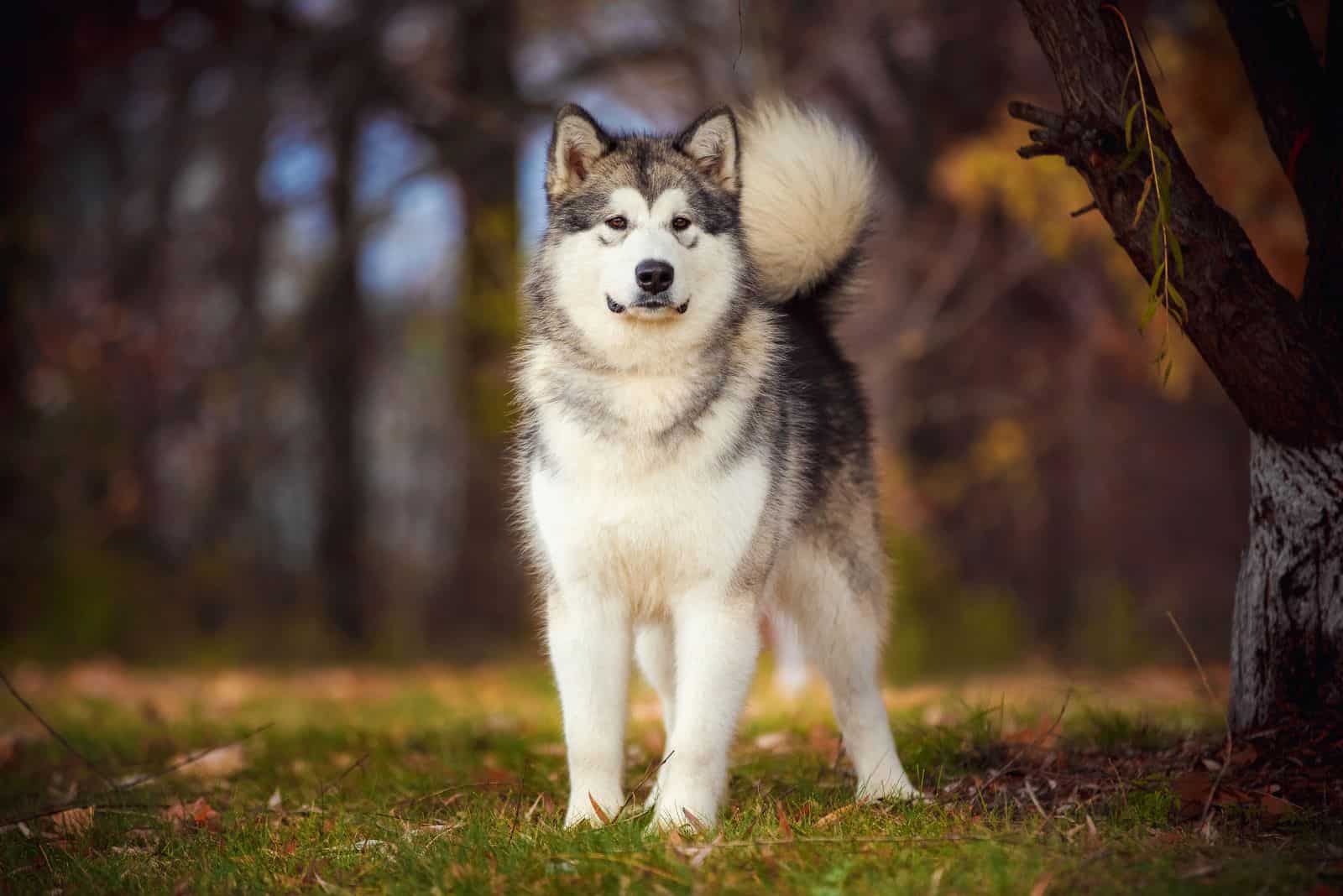
The canines used by hunters during the Paleolithic era are thought to be the ancestors of the modern Alaskan Malamute breed. They entered North America, or more precisely, modern-day Alaska, about four thousand years ago, by crossing the natural land bridges of the Bering Strait.
These folks domesticated wolves to create their dogs, in order to hunt seals, sled, or pull heavy loads. The Alaskan Malamute is considered to be one of the oldest Arctic sled dog breeds.
The Alaskan Malamute as a breed has existed for millennia before the German Shepherd. In fact, the Malamute is more closely related to the dog progenitor that first diverged from the wolf than virtually any other breed, making it a base breed.
Today, however, they are mostly used as companion dogs and they are excellent at it! They do still carry those sled dog genes so if anybody wanted to use them for that, they would be totally up for it.
Read next: 9 Alaskan Malamute Colors That Will Take Your Breath Away
The Origin Of The German Shepherd Alaskan Malamute Mix
There are a few contenders for the title of the first-ever designer dog breed. The mix between the Poodle and the Cocker Spaniel — aka. the Cockapoo — is perhaps the most commonly thought of as the first one, but there is also the Labrador Poodle mix — the Labradoodle — that got a lot of fame in the 1970s.
However, the Alaskan Shepherd also has somewhat of a claim to this title. German Shepherds and Alaskan Malamutes were first crossbred all the way back in the early 1900s.
They were initially bred as working dogs with a specific purpose, so they don’t fit the designer dog definition fully, but modern-day Alaskan Shepherds aren’t exactly sled-pullers anymore, so we can kind of consider them designer dogs now.
This dog has been popular in the US since the early 1900s despite not being recognized as an official breed by the American Kennel Club.
German Shepherd Alaskan Malamute Mix Physical Appearance
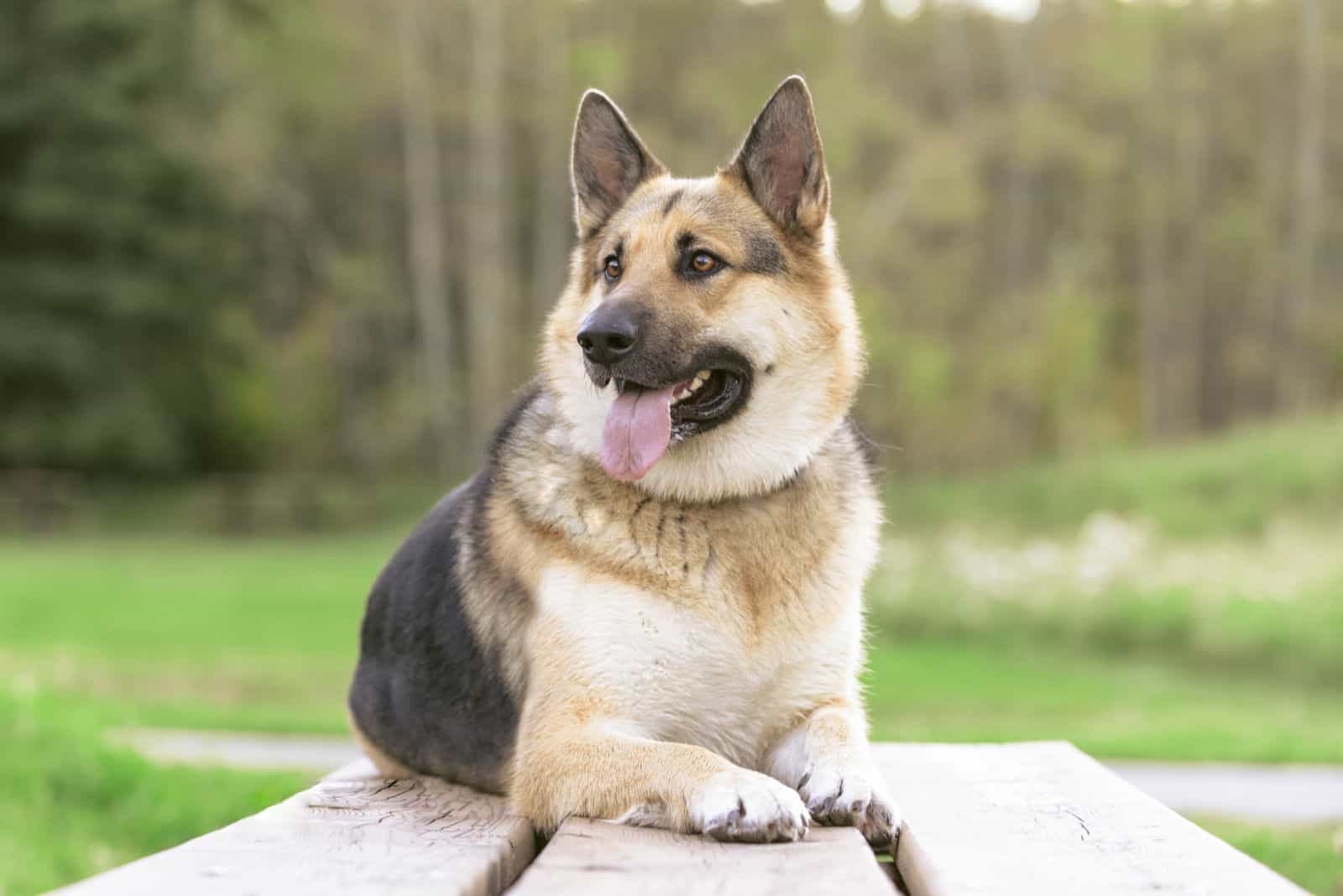
The Alaskan Shepherd is often a large, impressive dog with dark eyes and an attentive demeanor.
Both of the parent breeds have a wolf-like appearance, and so will this pup. They have erect, pointed ears and hazel, brown, or blue eyes. They can then have either black or brown noses.
German Shepherd Malamute mixes are extremely strong, as evidenced by their muscular build and dependable demeanor. It makes these dogs capable of hauling sleds and carrying heavy loads.
Size And Weight
You can expect your Alaskan Shepherd to weigh between 50 and 90 pounds and height between 22 and 26 inches, depending slightly on gender.
This is in tune with the sizes and weights of its parent breeds, which are fairly similar to each other in that respect.
The Alaskan Malamute is a large dog that normally weighs between 75 and 85 pounds and measures between 23 and 25 inches tall at the withers.
The German Shepherd has a similar size, standing between 22 and 26 inches tall and weighing between 50 and 90 pounds. Males are bigger than females in both breeds.
However, the size range that we mentioned isn’t a rule that is set in stone, and some Alaskan Shepherds can be outside of it. You should be ready for a potential giant, since some of them have been known to grow much bigger, weighing up to 120 or 130 pounds.
These giant dogs cannot live in apartments. For comfort, they require a home with a sizable indoor and outdoor area.
Coat Colors And Types
They have a straight, medium-length double coat that is made up of a thick, rough outer coat and a soft, dense undercoat.
Depending on their bloodline and the purity of their parents, some Alaskan Shepherds can have different coat textures. For example, some of them can have slightly smoother coats, like that of the short-haired German Shepherd.
In terms of color, these Shepherds look very much like their ancestors. Their patterns can be various and beautiful, but they mostly consist of black, gold, brown, red, and gray.
In rarer cases, some other shades can appear, such as white, cream, blue, liver, or sable. They can also come in three colors occasionally.
Eye Colors
Although it is occasionally believed that Alaskan Shepherds are one of the dogs that can have blue or light-colored eyes, blue eyes in a Malamute are a sign of interbreeding, most commonly with a Siberian Husky.
Alaskan Shepherds are usually born with dark or hazel-colored eyes and that is considered the standard variation.
German Shepherd Alaskan Malamute Mix Behavior And Temperament
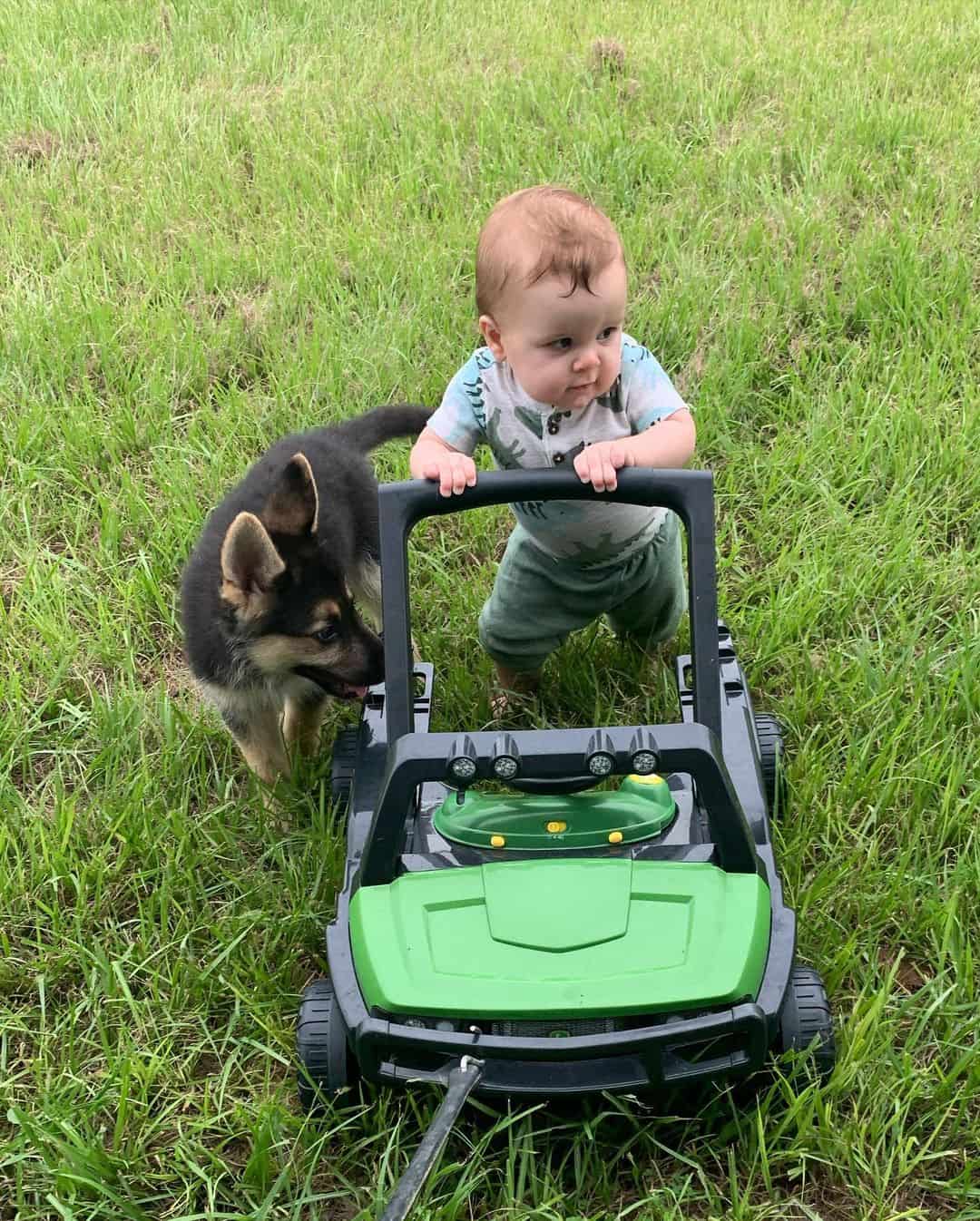
This loving and devoted dog is renowned for having a strong bond with its family, which is a trait that has been passed down to them from both parents.
However, they do sometimes have a tendency to be independent and strong-willed. Therefore, it’s crucial to keep this dog busy and mentally engaged.
Another trait that might transfer to the mix is the German Shepherd’s remarkable intelligence and bravery.
Are Alaskan Shepherds Easy To Train?
The training of Alaskan Shepherds takes a large amount of time due to their cleverness, inquisitiveness, and constant need for stimulation.
They will take pleasure in the mental stimulation of learning new tricks and orders from the time they are young puppies until they are old and gray. Even though they need a lot of attention, Alaskan Shepherds are a great option if you want a dog that you can play games with!
The ideal way to teach this breed of dog is with an experienced handler who can mold the desired behavior using both positive training methods and the dog’s intrinsic impulses.
Are Alaskan Shepherds Good Around Kids?
For the right family, the Alaskan Shepherd is the ideal canine companion. Although they should always be under supervision due to their size, they have a tendency to be loving and protective of kids.
They would never purposefully hurt a child and frequently go to great lengths to protect them, but their herding tendencies can sometimes cause them to inadvertently harass small children by “herding” them around.
They can also occasionally be unaware of their incredible size and strength.
They are dedicated family dogs and obedient guard dogs as long as their needs for stimulation, challenges, and exercise are addressed.
How Do Alaskan Shepherds Act Around Other Pets And Animals?
The Alaskan Shepherd is known to get along with most animals when given the right training and discipline.
They might not be as disposed to interact with other dogs — or other pets, such as cats and bunnies — while they are young, because of their high prey drive.
Occasionally, they might even attempt to establish dominance over other dogs by aggressive behavior or biting their necks.
However, as they age and naturally calm down, they can develop into friendly and hospitable dogs.
However, it’s important that you start socializing them early and that you establish yourself as the alpha pack leader, because that way they will learn their boundaries on time.
Are Alaskan Shepherds Good Watchdogs?
Alaskan Malamute German Shepherd mixes make excellent watchdogs, which will appeal to both families and individual owners.
They may easily detect warning signs when there is a potential threat because of their parents’ keen senses of sight, smell, and sound, as well as their incredible natural instinct.
However, unless they’re warning you of someone or something unusual nearby, they won’t bark excessively.
Are Alaskan Shepherds Aggressive?
The German Shepherd Alaskan Malamute mix has a reputation for being aggressive and sometimes dominating with other dogs.
While that reputation is a tad overblown, it is still important that you exercise caution. If you plan to keep your Alaskan Shepherd in a home with other pets, you need to put in the effort to get them used to each other.
Early socialization, combined with regular training, will control their aggression and make them calmer around other animals.
German Shepherd Alaskan Malamute Mix Diet And Exercise

Regardless of the diet you pick, it is essential to discuss your dog’s specific nutritional requirements with your vet to make sure they are being met.
There is a compelling case for feeding the Alaskan Shepherd a raw diet since the Alaskan Malamute, a base breed, would have just recently made the switch to pellets.
One benefit of dry dog food, however, is that it keeps your pet’s teeth and gums healthy. Pick a product with lots of calcium and protein, as well as simple-to-digest components like rice, chicken, and barley.
The Alaskan Shepherd breed has a reputation for being prone to obesity, so it’s important to keep an eye on its food if it consumes a little bit more than it burns off exercising.
How Much Should I Feed My Alaskan Shepherd?
Your dog’s age, weight, metabolism, and general health will determine the type of diet and serving size you should give her.
Two to three cups of dry dog food should be given to an adult Alaskan Shepherd each day. Given their size, be sure you have the money to cover their high monthly food expenses!
Additionally, we suggest you follow a regular feeding schedule, limit the number of dog snacks you offer, and avoid giving table scraps or any human food to this crossbreed because obesity is another risk factor.
How Much Exercise Does My Alaskan Shepherd Need?
The Alaskan Shepherd, which shares DNA with two robust, active dog breeds, has a persistent urge to be active, even as it ages.
They enjoy being brought outside for walks, runs, and hikes since they have huge reserves of energy and endurance. They may easily do more without complaining, but an hour per day of moderate activity is a decent baseline to aim for.
So be sure to take them out to the woods, or at least to the dog park if you can.
German Shepherd Alaskan Malamute Mix Grooming Needs
Grooming is one of the most important aspects of owning any dog breed, but especially when you have a German Shepherd Alaskan Malamute mix. Because of their thick, lush coats, they often need some extra attention.
But there is more to grooming than just taking care of the dog’s coat.
You can keep an eye out for early indications of serious illnesses, or even notice ticks in the fur by paying close attention to your dog’s grooming requirements.
Brushing
It depends on how long your pet’s hair is, but thick coats like these need brushing anywhere from twice a week to five times a week.
It’s best to use a brush with bristles and stroke it in a single direction. The ideal method for removing knots, matting spots, and loose hair while promoting the coat’s natural oils, is to use a slicker brush.
Since Alaskan Shepherds can have a coat that is similar to German Shepherds, why not check out some of these brushes that work best with that breed?
Bathing
As a rule of thumb, bathing is not something that your dog should experience too often.
When it comes to Alaskan Shepherds, we can compare their needs with those of their parent breeds, due to the similarities in their coats. German Shepherds, for example, are recommended to be bathed two to six times per year.
To avoid drying out your doggy’s coat and skin, only give your dog a bath when it looks and smells terrible.
Ear Cleaning
The ears of an Alaskan Shepherd are a particularly sensitive spot on their bodies, mostly because of their GSD heritage. Therefore, you should be careful when inspecting and cleaning them.
Use a cotton ball and a dog-specific ear solution to clean your dog’s ears on a weekly basis. Make sure that you take extra care with any black gunk that might have accumulated in there.
Additionally, be sure the ears are dry to prevent infection.
Nail Trimming
Since dogs’ nails can naturally become shorter with exercise, how often they need to be trimmed depends depend on their degree of activity.
Alaskan Shepherds are typically high-energy, high-activity dogs, so they probably won’t need trimming as often as some other, more sedentary, breeds.
However, if you hear a clicking sound when your dog taps its paws on the floor, that means it’s probably time to give those claws a trim.
Paw Checking
Apart from trimming the nails, you should also examine your German Shepherd Malamute mix puppy‘s paws in general.
They might become dry and scaly, and if this happens, you can treat them with vaseline, but if you see some redness in the paws, there might be an infection going on. Be sure to consult your veterinarian if this is the case.
Do Alaskan Shepherds Shed A Lot?
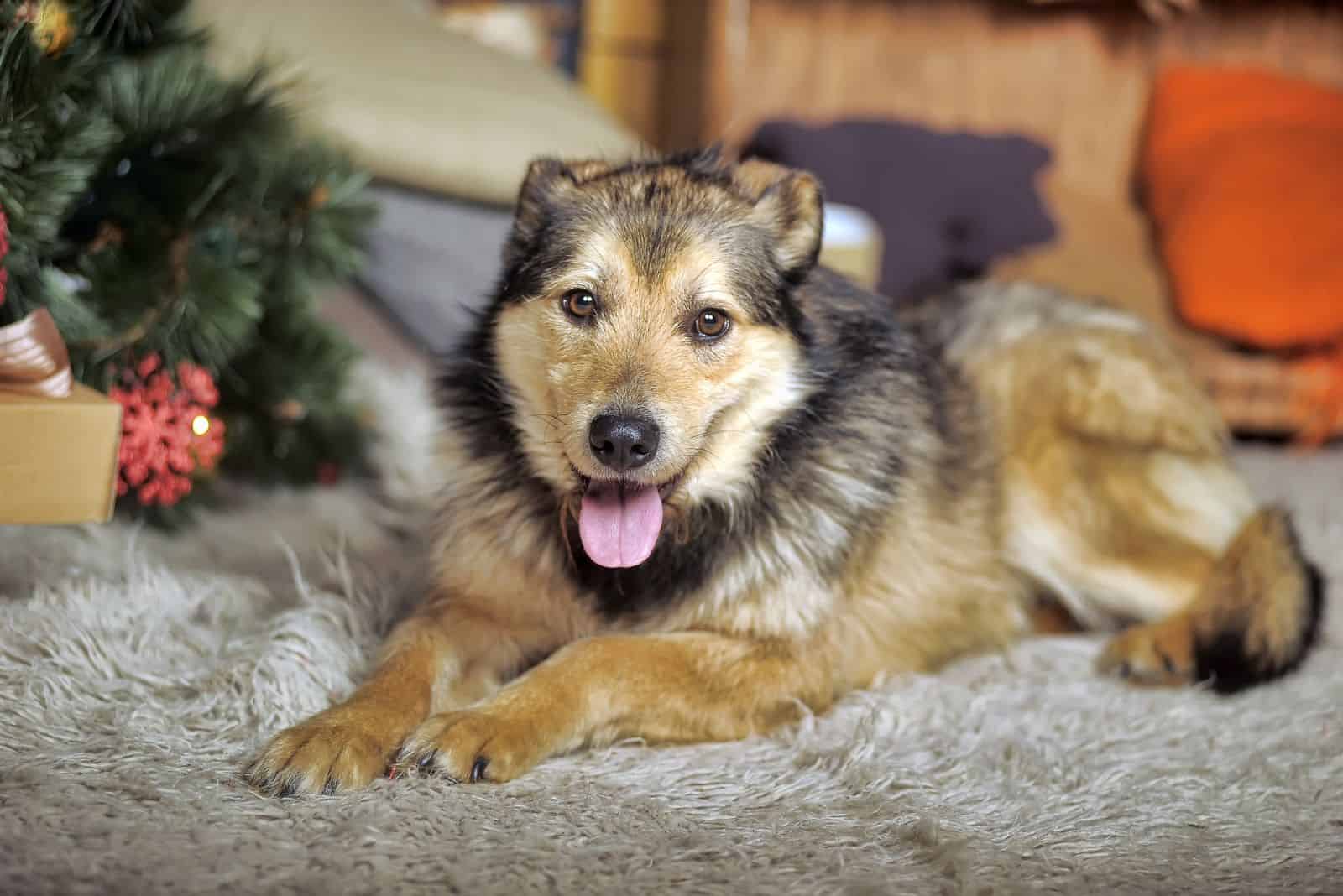
We can assume the Alaskan Shepherd sheds moderately to heavily, just like both German Shepherds and Alaskan Malamutes do.
Heavy periods of shedding are common in an Alaskan Shepherd’s extremely dense, medium-length coat. This is particularly true in the spring and fall when they shed one coat in order to get ready for the new season.
For most of the year, weekly brushings are sufficient; but, during their shedding seasons, this frequency should be raised to daily.
To reduce the amount of shedding, some owners use a de-shedding tool twice weekly.
Are Alaskan Shepherds Hypoallergenic?
Due to their dense coat and heavy shedding, Alaskan Shepherds are not hypoallergenic.
If you or someone in your household struggle with allergies, you should probably rethink adopting a German Shepherd Alaskan Malamut mix and perhaps opt for a different, more hypoallergenic, dog breed.
If you still want a reliable watchdog, but don’t want to be sneezing all the time, here is a list of the best hypoallergenic guard dogs.
German Shepherd Alaskan Malamute Mix Health
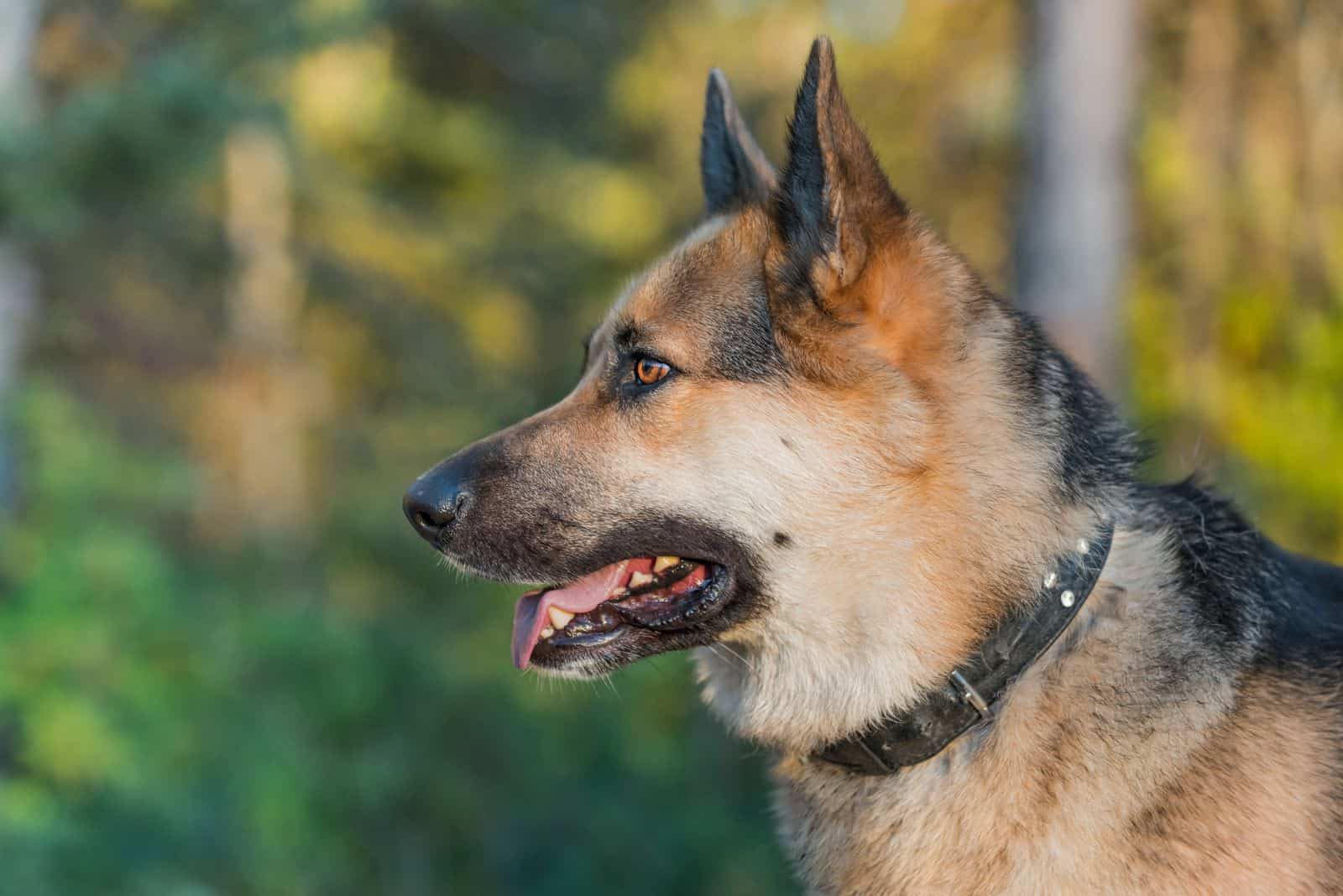
Due to hybrid vigor, crossbreeds are generally thought to be healthier, and the German Shepherd Alaskan Malamute mix generally has good health because of its mixed origin.
In fact, both GSDs and Malamutes appear in our list of the healthiest dog breeds in the world.
However, there are still some health conditions that their purebred parents are predisposed to and they can be passed along to the mixed puppies.
There are certain health issues that are known to affect Alaskan Malamutes and German Shepherds, and we will discuss them in more detail later on.
Alaskan Shepherd Lifespan
The expected lifespan of a German Shepherd Alaskan Malamute mix is between ten and thirteen years.
That is comparable to the life expectancies of its parent breeds, as German Shepherds tend to live for about nine to thirteen years, while Alaskan Malamutes are generally in the ten to twelve range.
Common Health Problems In The German Shepherd Alaskan Malamute Mix
Mixed dogs are considered to be generally healthier than purebreds, even if some of them are designer dogs.
However, even crossbreeds aren’t immune to some of the issues that affect their parent breeds. In fact, Alaskan Shepherds can occasionally suffer from any illness that is typically associated with either of their ancestors.
Not all of these health problems will affect your pet, though. To make sure it is safe from these conditions, it is recommended that you get evaluations of its elbows, hips, and eyes, as well as a Polyneuropathy DNA test.
Hip Dysplasia
The thigh bone does not fit snugly into the hip joint in medium to large-sized dogs with hip dysplasia.
Because Alaskan Shepherds fall within this size range, which is the most frequently affected one, they are susceptible to hip dysplasia.
Elbow Dysplasia
Because the elbow joint is malformed, the condition known as elbow dysplasia sometimes results in arthritis and lameness.
Similar to hip dysplasia, it mostly affects large and medium-sized dog breeds.
Cancer
One in every four dogs is eventually diagnosed with cancer, which is the most prevalent cause of death in pets over the age of ten.
Some malignancies in dogs are more common than others, much like in humans. Fortunately, with the correct care, many dogs with cancer can still enjoy happy, fulfilling lives.
Bloat
Bloat is a serious condition that can be fatal if left untreated.
A dog’s stomach may occasionally twist around on itself and stay in that position if it becomes overfilled with food or gas. As a result, the dog may experience bloat, which can appear suddenly and without warning.
Cartilaginous Exostosis
In this situation, a new bone grows in the spaces between the cartilage. It occurs more frequently in Alaskan Malamutes than it does in German Shepherds, so if your dog’s genetics lean more toward that side of the family, it can potentially be prone to cartilaginous exostosis.
Chondrodysplasia
The Alaskan Malamute is susceptible to the bone and cartilage condition that is known as chondrodysplasia.
It is best known for causing dwarfism in some dogs.
Idiopathic Polyneuropathy
Motor nerve dysfunction is a common component of polyneuropathy. Weakness or paralysis, as well as diminished or absent reflexes and muscular tone, are some of the symptoms.
It usually affects the back legs and is bilateral. The majority of issues are chronic and manifest gradually, but some do so unexpectedly.
Hypothyroidism
Hypothyroidism in dogs is typically brought on by either idiopathic thyroid gland atrophy or lymphocytic thyroiditis.
The former condition, which is assumed to be an immune-mediated condition, is the most frequent cause of hypothyroidism.
Exocrine Pancreatic Insufficiency
The inability to produce enough pancreatic enzymes to digest lipids, carbs, and proteins is known as exocrine pancreatic insufficiency (EPI).
This digestive issue results in inadequate nutrient absorption, which frequently results in weight loss despite a normal or increased appetite.
Obesity
German Shepherds are prone to overeating which can lead to severe obesity if it reaches the extreme. That habit is something that often gets passed down to their Alaskan Shepherd offspring.
Fortunately, you can control this to a high degree by taking special care of your pet’s diet and making sure it gets the right amount of exercise.
Blindness
At birth, your dog may be partially or completely blind. Blindness may also develop over time.
It is a terrible tragedy to happen to a dog, and it makes life challenging and confusing for it.
Fully blind dogs need a lot of extra care and consideration, therefore only knowledgeable and patient dog owners should take care of them.
Von Willebrand’s Disease
A genetic blood illness called Von Willebrand’s disease most frequently affects dogs, but it can also befall some other pets, and even humans.
It is brought on by a lack of von Willebrand factor, a blood protein that aids in the adhesion of platelets to wounded areas to form clots.
Degenerative Myelopathy
German Shepherds experience this more frequently than Alaskan Malamutes.
With degenerative myelopathy, walking becomes more challenging as the spinal cord condition progresses, and eventually, the ability to move the hind legs is completely lost.
Other Health Concerns
Aside from the ones that we have listed, German Shepherd Alaskan Malamute mix dogs can also experience some other medical difficulties, such as allergies, cataracts, ear infections, as well as heart issues, and various dental problems.
However, it’s important to note that this breed is generally very sturdy and healthy. Despite listing so many different potential illnesses, most Alaskan Shepherds go through their entire life without experiencing any serious danger.
That’s especially true if the owner takes good care of them, so you should pay close attention to their diet, exercise, and grooming needs.
German Shepherd Alaskan Malamute Mix Cost
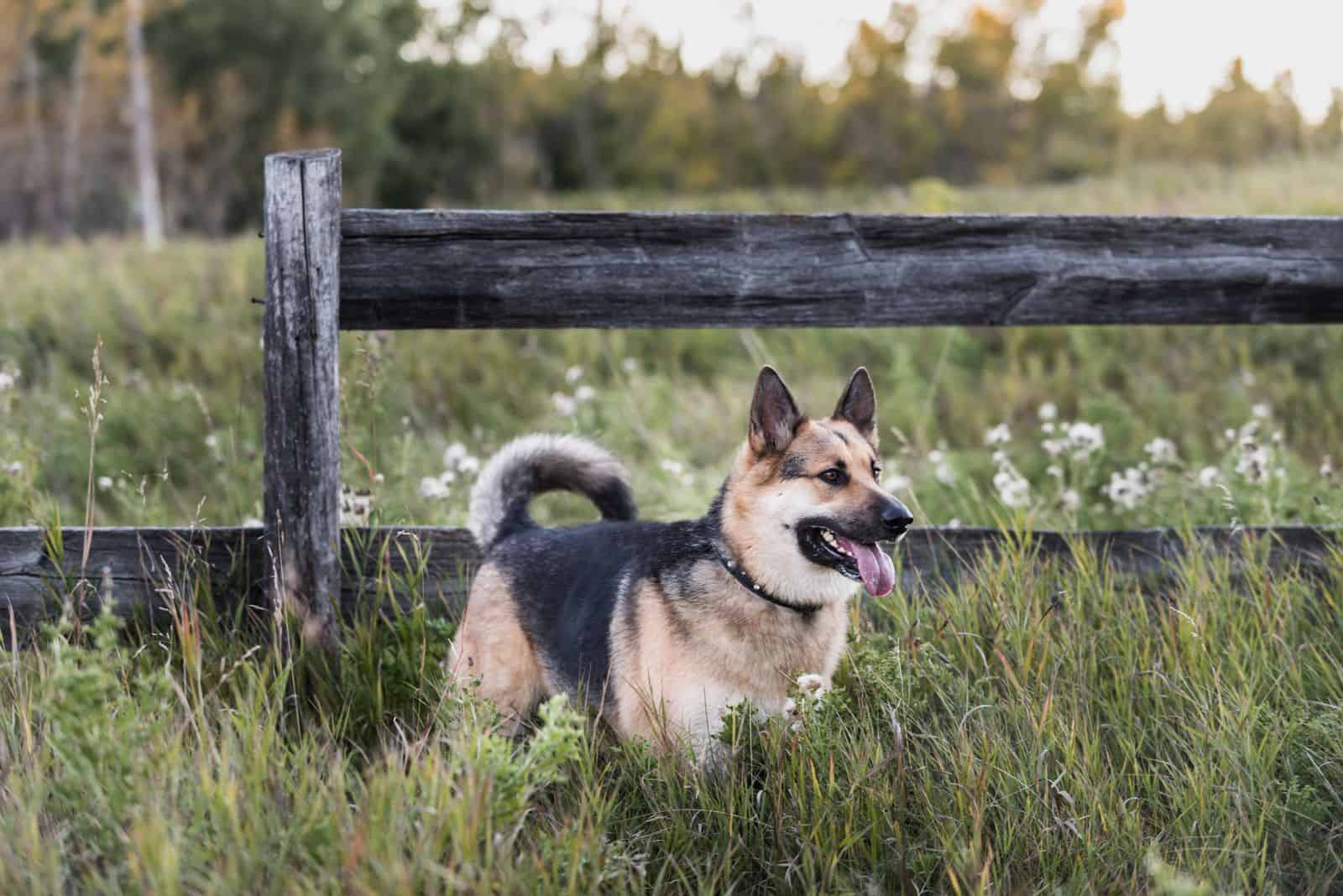
It’s hard to pinpoint an exact number when it comes to the price of a German Shepherd Alaskan Malamute mix puppy.
Mixed breeds often vary wildly in price, depending on multiple factors, but mostly on the quality of their parents. Therefore, your pup’s parents’ bloodline, pedigree, and health background, among other things, will play a big role in dictating the actual upfront cost.
The price will, of course, be different when you buy it from a reputable breeder than it is when you get a puppy from a rescue shelter.
It might seem strange that such an incredible dog breed would be forced to go to a shelter, but there are some Alaskan Malamute and German Shepherd rescue centers out there.
Read next: 10 German Shepherd Breeders: The Finest Ones In America
What we can say with a decent amount of certainty is that Alaskan Shepherd puppy prices typically start at $800 and go upwards from there.
But let’s now talk about the costs of the parent breeds in order to give you a clearer picture of their offspring’s price range.
German Shepherd Price
There is a typical price range you can expect for a purebred German Shepherd dog even though there are a lot of elements that influence this pricing.
Puppies of German Shepherds often range in price from $450 to $1,900. However, this price can vary widely, and you might end up paying more than $8,000 for a puppy if you choose one with a champion ancestry.
Alaskan Malamute Price
The cost of an Alaskan Malamute puppy ranges from $500 to $3,000, while puppies with a champion or high-caliber bloodline can cost up to $3,500 each.
The pricing range for Alaskan Malamutes is influenced by additional elements such as size, color, markings, and size.
You can choose between an Alaskan Malamute in standard or large size, according to your preferences. This breed’s giant variation is anticipated to cost significantly more than its ordinary kind.
Final Thoughts
The Alaskan Shepherd can be the breed for you if you don’t mind the breed’s need for excessive grooming and can provide this pup with a large house. They are devoted family members who are perceptive to their surroundings and get along with other animals.
Consider the other drawbacks as well, such as how they could grow overly independent and territorial.
All things considered, they are not the best dogs for first-time owners, like Golden Retrievers are, for example. But they are a very rewarding breed that will be worth all the effort you put into raising it.
This article is actually a great way of preparing yourself, since it outlines a lot of the most important characteristics of this dog breed, including its appearance, temperament, health, as well as physical, dietary, and grooming needs.
If you end up deciding to adopt one of these dogs, we are sure that you will be over the Moon about it! German Shepherd Alaskan Malamute mixes are wonderful companion dogs who will spoil you with their love, but also keep you safe with their watchdog abilities.
Read Next:
• Samoyed German Shepherd Mix Guide
• Revealing The Alaskan Malamute Feeding Chart Mystery















